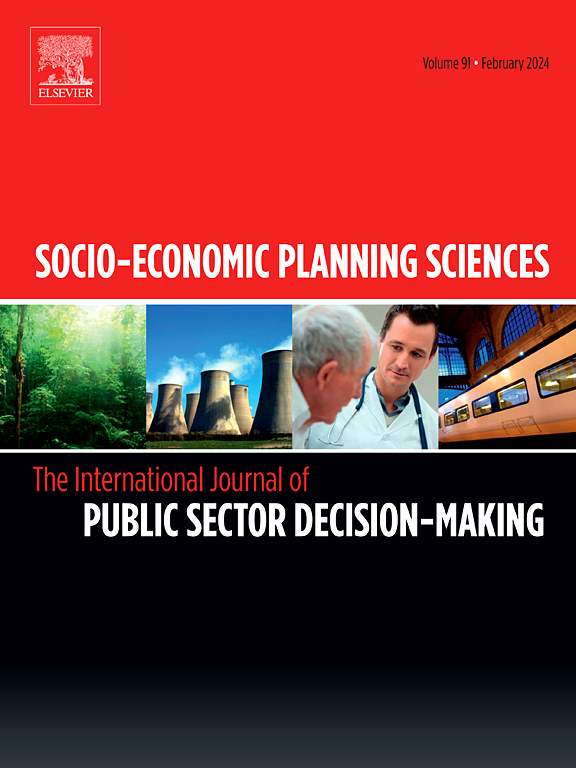Comparisons of emission trading scheme implementation modes in a low-carbon supply chain
IF 6.2
2区 经济学
Q1 ECONOMICS
引用次数: 0
Abstract
Emission trading scheme (ETS) is widely employed as a policy instrument in supply chain emissions management. Two modes of ETS implementation are commonly applied across supply chains: separately imposed ETS (S-ETS) and jointly imposed ETS (J-ETS). However, it is unclear how the two distinct modes of ETS implementation influence the economic and environmental performance of supply chains. This paper considers a low-carbon supply chain system comprising one supplier and one manufacturer, where all carbon emissions generated by supply chain members are constrained by ETS. By employing game theory and MATLAB numerical analysis software, this study investigates the impacts of the two ETS modalities on carbon abatement decisions, profitability and social welfare within the supply chain. Furthermore, the study examines a scenario incorporating government subsidies to enhance ETS efficiency. The results show that compared to S-ETS, J-ETS can reduce total carbon emissions of the supply chain with high carbon emission intensity. From the perspective of social welfare, J-ETS is also more advantageous for such supply chains. However, this ETS modality may negatively impact the supplier's profitability. When government subsidies are introduced into J-ETS, coordinated improvements in the economic and environmental performance of the supply chain can be achieved. This paper also provides the government with subsidy level conditions under which J-ETS can maximize social welfare for supply chains with varying carbon emission intensities.
求助全文
约1分钟内获得全文
求助全文
来源期刊

Socio-economic Planning Sciences
OPERATIONS RESEARCH & MANAGEMENT SCIENCE-
CiteScore
9.40
自引率
13.10%
发文量
294
审稿时长
58 days
期刊介绍:
Studies directed toward the more effective utilization of existing resources, e.g. mathematical programming models of health care delivery systems with relevance to more effective program design; systems analysis of fire outbreaks and its relevance to the location of fire stations; statistical analysis of the efficiency of a developing country economy or industry.
Studies relating to the interaction of various segments of society and technology, e.g. the effects of government health policies on the utilization and design of hospital facilities; the relationship between housing density and the demands on public transportation or other service facilities: patterns and implications of urban development and air or water pollution.
Studies devoted to the anticipations of and response to future needs for social, health and other human services, e.g. the relationship between industrial growth and the development of educational resources in affected areas; investigation of future demands for material and child health resources in a developing country; design of effective recycling in an urban setting.
 求助内容:
求助内容: 应助结果提醒方式:
应助结果提醒方式:


